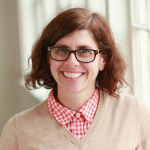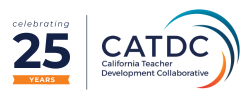The Benefits of Immersive Learning

Realizing Our Vision
This past January, The Bay School of San Francisco launched its inaugural Immersives program: three-week academic courses that are experiential and project-based. After two years of developing curricula, honing pedagogy, securing partnerships with organizations throughout California, and working out the logistics of each course, Bay expanded its campus beyond its walls and invited students to learn in more authentic ways. The outcome exceeded our expectations, and it was an honor to be a part of it.
This first round of courses (16 in all), ranged from California Natural History and the Biology of Health and Wellness among some of our 9th grade offerings, to a core Shakespeare offering for all 10th graders, to the Mathematics of Democracy, Wealth and Poverty, and Buddhism for students in 11th and 12th grades. Each class afforded students the opportunity to learn in an iterative process that allowed for a single academic focus, culminating in a final exhibition night in which students showcased their learning to the entire school community.
Getting Immersed in Buddhism
As a practitioner of mindfulness and an adherent to Buddhist philosophy, I had the good fortune to teach the Buddhism Immersive.Students learned about the philosophical underpinnings of the Buddhist religion and philosophy alongside developing a vipassana mindfulness practice. For three weeks, students committed to mindfulness twice a day, and in between practice periods, they learned about the four noble truths, Buddhist precepts, and dependent origination; they applied their learning to a range of projects, personal narratives, a “dharma talk,” and a lesson to the Bay community for exhibition night. Students visited two meditation centers and learned from teachers at these sites, and conducted individual research on additional Buddhist concepts. Students even explored the roles of suffering and desire at a local shopping mall—examining the ways businesses advertise “desire” to customers as a way to thwart the inevitabilities of impermanence. By the time students shared their final dharma talks on concepts ranging from impermanence to eradicating craving to how all things are interconnected, I was impressed and inspired by the facility with which students could speak about their learning, showing me how much they grew in such a short period of time.
Gaining Wisdom
Bay is among a collection of schools nationally to explore learning in an immersive format, and the benefits to this approach are manifold. Drawing upon the Intensives program at Hawken School in Ohio, the Block Plan at Colorado College, and peer schools who undertook their own immersive learning, Bay was able to gain wisdom from a range of organizations and design a program that was mission- and value-aligned. While the program still has its quirks and kinks, and while the demands of teaching a multi-hour day with adolescents brings a new set of challenges and levels of exhaustion, the rewards far outweigh any of the perceived obstacles. When our faculty had an opportunity to collectively reflect on this process at a recent Staffulty meeting, we saw the benefits of immersive learning in the following ways:
- Immersives enable personalization with greater impact. When students are learning one subject all day, every day, teachers need to be skilled at developing strong relationships and supporting all students in finding their entry points and passions; there also needs to be a great degree of pedagogical variety to meet course goals. As a consequence, students are learning in conditions that have multiple paths to achieve course objectives, and students develop close relationships with their teachers that allow for more personal relevance and connection with the curriculum. Students have more space and time to work at a pace that best serves their needs, and they are able to take greater ownership of their learning.
- Immersives are transformative for class cultures and communities. Because students are learning in self-contained environments for three weeks, class bonding increases exponentially. Teachers and students have the opportunity to co-create conditions for learning, set class agreements, test and adjust those agreements with more immediacy, and deepen connections with one another in a concentrated timeframe. Even though we’re now well into our next semester, I find myself savoring moments when I see my students from Buddhism, and I see those same sentiments shared from teachers and students across other courses as well.
- Immersives increase student engagement. It’s hard for students to hide in an Immersive, and it’s even harder for a student to hide when they’re taking a trip to Anzo Borrego National Park, visiting the Capitol and meeting with district representatives, performing a monologue in front of their peers, or making a film in the Marin Headlands. The combination of choice (most students received their first choice Immersive) and authentic learning lend themselves to more engaged experiences that increase students’ accountability, raise the stakes for learning, and solidify understanding and application of course content.
- Immersives can augment a school’s mission and values. Immersive courses can support schools in fulfilling their vision by deepening what’s most core to a culture. For Bay, our mission is to balance challenging academics and innovative thinking with a mindful approach to learning and life. Our goal is for students to unlock their individual and collective potential as they begin to realize their roles in a dynamic world. When students are presenting their research at the American Astronomical Society, designing a lunch tray that supports people with limited mobility, or offering equitable solutions to voting rights, students have the potential to see themselves as part of something bigger—recognizing they are young people who have the potential to contribute to the world and improve it with creativity and courage. I can’t imagine a better way to support our mission and the broader goals of education in the 21st Century.
We have learned much from this first pass at Immersives, and much of this wisdom will inform our second term at the end of this school year. What we know for certain is we’re more aligned with our values, more willing to take risks in teaching and learning, and more ready to prepare our students for what it means to be fully vested in this enterprise we call education. We hope to share this wisdom in a larger CATDC roundtable this spring, and if you are interested in learning more about the benefits of Immersive learning and have an interest in attending this round table, please contact me at lcohen@bayschoolsf.org.

Lori Cohen has worked in education (both public and independent) for two decades and currently serves as the Dean of Faculty at the Bay School of San Francisco. Prior to her current role at Bay, Lori taught Humanities, Literature, and Religion/Philosophy courses; served as an Instructional Coach; and was the founder/coordinator of Bay’s Teaching Fellows program. This will be Lori’s sixth year as a co-facilitator/teacher leader in Teaching Foundations, a program that brings her joy and professional rejuvenation. In addition to facilitating professional development, teaching, and leading, Lori actively works towards equity and social justice in education, striving to offer access and pathways for all school stakeholders to thrive.
